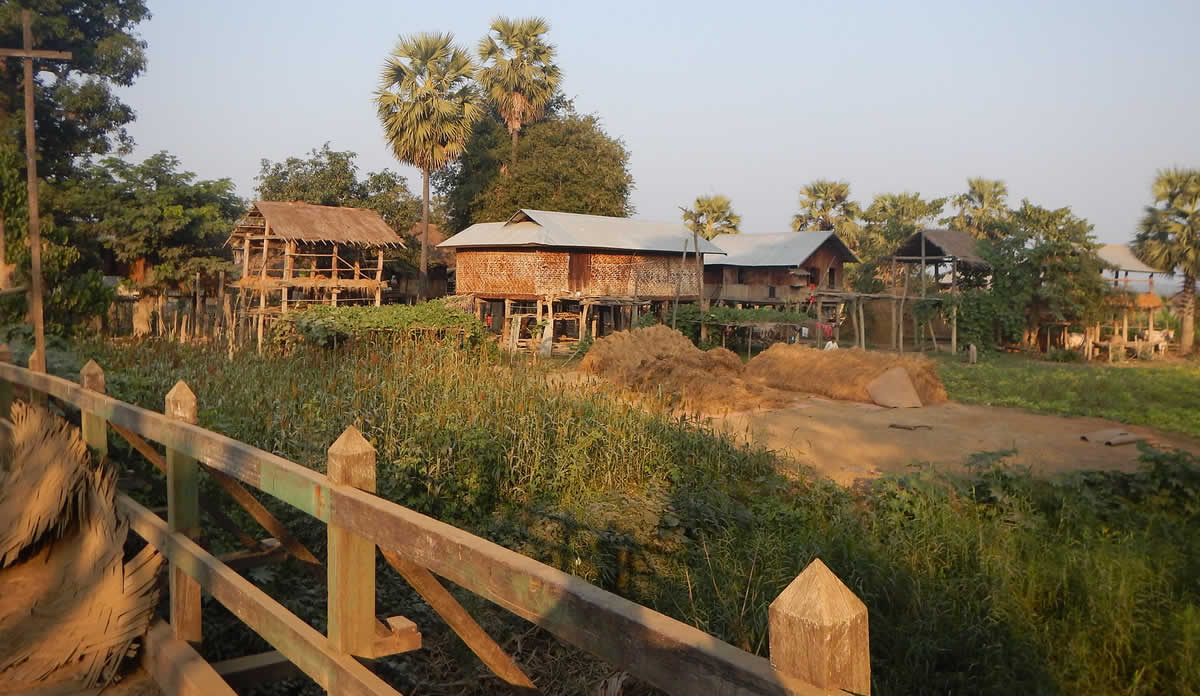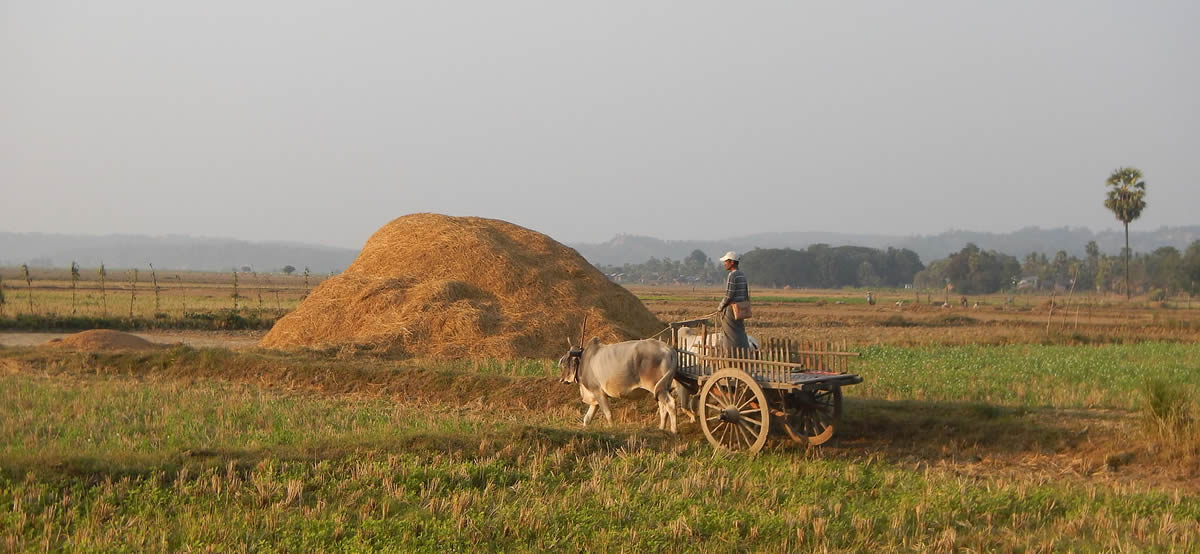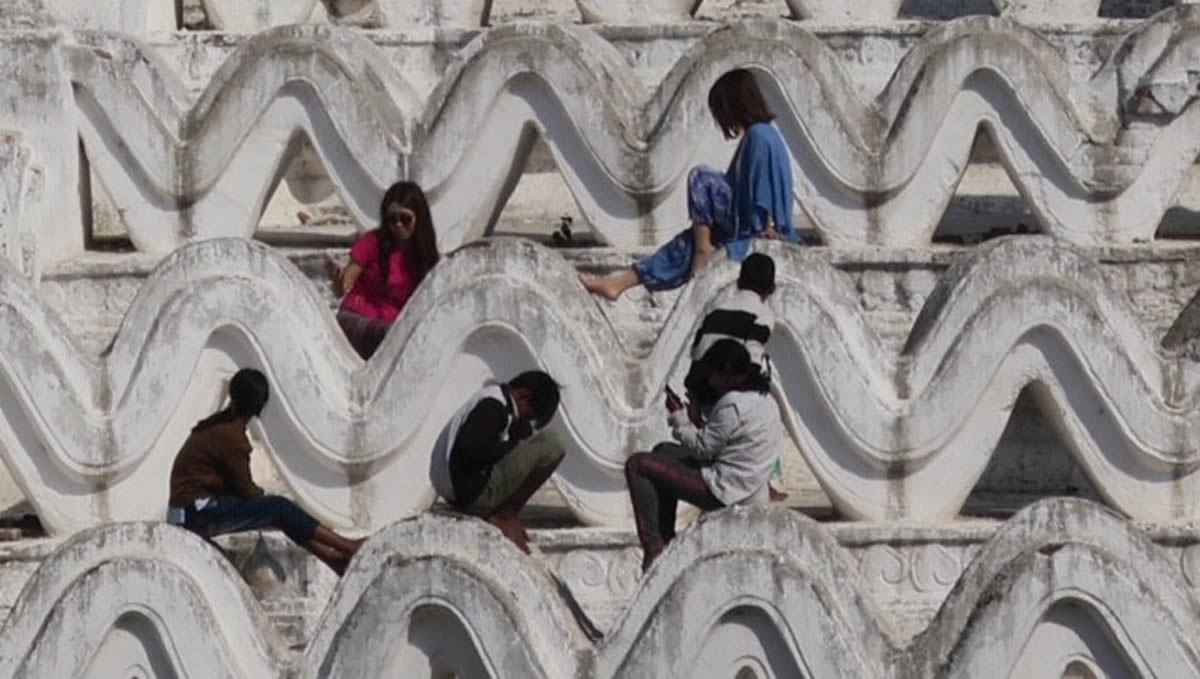A small town that had long been hidden from the world, Mingkin is a location in Myanmar that was only rediscovered as recently as 1987. After Paul Strachan, (Pandaw’s founder), described it in his book “Travels from The Golden City”, it became an area of great interest to travellers. Though far from the most famous spot in Myanmar, it still remains one of the most culturally interesting and is primarily accessible by the Chindwin River Cruises going through the area.
 Typical homes near Mingkin
Typical homes near Mingkin
About Mingkin
Also known as Mingun, Min Kun, and Minkin, this town of the Sagaing region is more than 11 km up the Ayeyarwady/Irrawaddy River from Mandalay, and is considered a must-see by experts of the area, even if it’s not too well known. It’s known for a few things, including housing the world’s largest, uncracked, working bell as well as the Mingkin Pahtodawgyi, the construction of which was halted and never continued after the death of King Bodawpaya in 1813.
 Daily life for villagers near Mingkin
Daily life for villagers near Mingkin
The Mingkin Pahtodawgyi
A huge and impressive stupa that was initially being worked on by King Bodawpaya, work on this was initially stopped when an astrologer claimed the king would die as soon as the work as completed. Even after his death, the stupa was left as it was, even though it would have been the largest in the world on its completion. The Pahtodawgyi suffered some more damage after an earthquake hit the town. Nearby, you can still see a pondaw paya, or a working model of what the completed stupa would have looked like. Visitors are not allowed to enter the pagoda itself, but can make the ascent up the brick steps to take a closer look.
Views from the top of the pagoda
The top of the Mingkin pagoda also offers some excellent views of the surrounding rivers, villages, and the natural surroundings reaching all around. The arched lookout ports on the upper terrace also make an excellent vantage point, from which you can see many of the other surrounding outposts in the area.
The Hsinbyume Pagoda
Recognisable for its stark whiteness, this pagoda isn’t too far from the site of the stupa or the bell that the town is famous for. Designed in a style modelled after Mount Meru, where the Hindu gods are said to come from, this pagoda was built on the orders of King Bagyidaw. It was built in dedication to his first consort, Princess Hsinbyume, who it was named after. Princess Hsinbyume was also known as the Lady of the White Elephant, which is thought to explain the stark whiteness of the pagoda, as well.
As little-visited as it is, Mingkin is worth the trip. Besides the pagodas and the bells mentioned, the decorated teak monasteries include the oldest wooden religious complex in the country, and there are many surrounding villages where visitors can see the lifestyles, crafts, and traditions of the local people. It’s a historic and cultural site that it would be a mistake to miss out on - the best way to experience it is on our 7 night Chindwin cruise, where you can spend a day exploring Mingkin with its markets and architecture.
 People relaxing on the Hsinbyume Pagoda
People relaxing on the Hsinbyume Pagoda